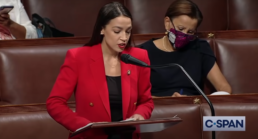The first rule you’ll hear in a screenwriting course is, “Show, don’t tell.” It’s a close cousin to the second rule: movies are a visual medium.
Screenwriter Robert Towne (Chinatown, The Godfather (uncredited)) offered a slightly different take:
“A movie, I think, is really only four or five moments between two people; the rest of it exists to give those moments their impact and resonance. The script exists for that. Everything does.”
Those moments are most often created through dialogue. In other words – words. Words the characters say, and words they choose not to say. And that isn’t showing, I’d argue with screenwriting teachers, that’s telling.
To make my case, I’d cite what I thought were indisputable examples. “No, I am your father,” from The Empire Strikes Back; and “She’s my sister. She’s my daughter. She’s my sister AND my daughter!,” from Towne’s masterpiece, Chinatown. Those revelations could not be shown, per se. They had to be told. And that didn’t diminish their impact and resonance. In fact, the words and their telling drove the impact and resonance.
Where I’ve struggled with words and film storytelling is with voice-over narration. It came up recently in conversation because a friend and I had both been reading Glen Kenney’s new book Made Men, about the making of Martin Scorsese’s classic 1990 gangster epic Goodfellas.
That led me to re-watch Goodfellas after more than a decade. I recalled being blown away by it, but was curious that I couldn’t remember any scenes with Ray Liotta’s character, Henry Hill, as a young boy. They take up about the first twenty minutes of the movie, over which there is almost no dialogue. It is made up, almost entirely, of running voice-over narration.
The narration tells us what we need to know and sets up the rest of the movie nicely, but I found it kept me detached – a passive observer. I started to form the view that no movie has benefitted from narration, and the best movies never use it. It’s a cheat. It’s telling, not showing. Those long-ago screenwriting teachers had been right all along.
The other day on my Twitter feed someone posted a letter the great British filmmaker Michael Powell (Stairway to Heaven) wrote to Scorsese in reaction to a draft of the Goodfellas script. He writes:
“How have you managed to sustain the action and narration side by side for the whole length of the script? It’s a masterpiece. I can only compare it with Billy Wilder’s Double Indemnity.”
Reading that was a revelation. I’d forgotten that Wilder used voice-over, not just in Double Indemnity but in his other classics, Sunset Boulevard and The Apartment, as well. Other great movies have used it too. All About Eve and Election come to mind. And to be fair, some of the best scenes in Goodfellas, like the opening freeze-frame of Henry standing over a dead body (“As far back as I can remember, I always wanted to be a gangster”) to the famous Copacabana tracking shot, were all informed and deepened by voice-overs.
But still, so often voice-over can fall flat and push me out of the movie, rather than pull me in. What makes the difference?
I think it’s defined by whether the words are passive or active. Darth Vader and Evelyn Mulwray’s dialogue in Empire and Chinatown aren’t really telling. They’re showing. They are making revelations. Their words have a profound and immutable impact on the characters hearing them, and on us, the audience. They are words that are actively spoken, and thus actively heard.
That’s the standard every storyteller should hold themselves to, whether your medium is a screenplay or a speech. When your words deepen our understanding of your story, they pull us in. When your words help us understand what you want, why you want it, and why it matters, we are no longer passive listeners. We become active participants, asking the age-old question every storyteller strives to evoke:
“What happens next?”
Curious Public
Curious Public Content and Insights simplifies the complex, finds your core message and makes sure it reaches your audiences.
Related Posts
September 29, 2020
The second wave is coming. Let’s remember the 6 lessons of the first wave
0 Comments3 Minutes


